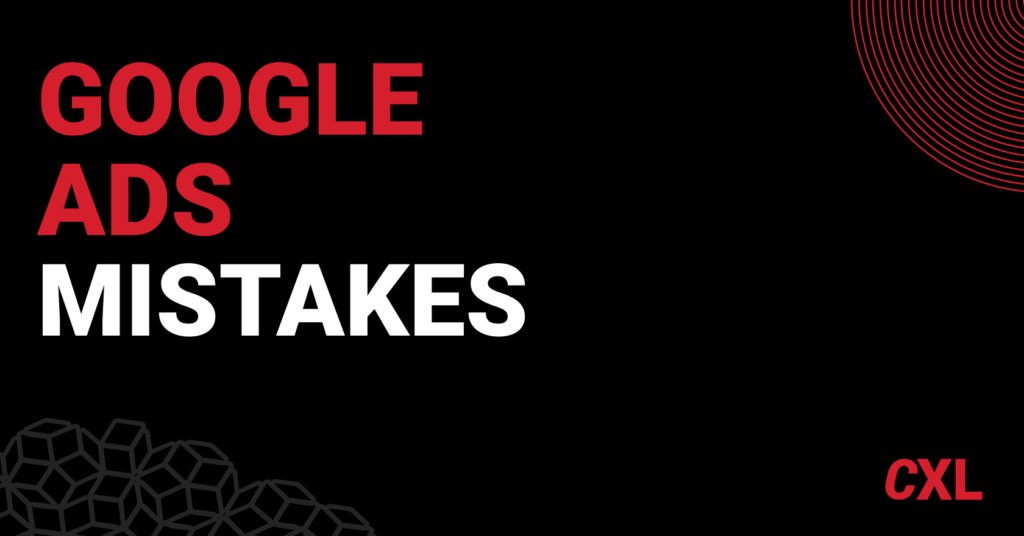Do you use Google Ads? For many businesses, it can be one of the most cost-effective channels for driving leads and sales. If you do it right, that is.
Google estimates that for every $1 a business spends on Google Ads, they receive $8 in profit. And yet, even with those potentially impressive margins, there are five common mistakes that lead to lost revenue.
If you’re making one or two of these mistakes, you’re needlessly burning money.
Table of contents
1. Getting a poor Quality Score
In Google Ads, Quality Score is the alpha and omega. Run ads without knowing the factors that go into your Quality Score, and you’re putting yourself at a disadvantage from the start.
For every keyword you use in your campaigns, Google assigns a Quality Score ranging from 0 to 10 (best). You should always aim to get a 7 or better.
A high quality score reduces your cost per click, while raising your ad position at the same time. This results in more (and cheaper) clicks.
To get a high quality score, you need to:
- Create a dedicated ad group for every keyword and make sure that keyword is in the headline of the ad text (ideally on the next lines, too).
- Create high-converting and relevant ad copy that makes people want to click on them (the higher the CTR, the higher the Quality Score).
- Add the keyword to the display URL.
- Optimize the landing page (where the user is taken after clicking on your ad) for the search keyword (e.g., title tag, headlines, content).
- Make your initial max CPC higher than suggested.
Over 100 factors affect your score, but if you do these things right, you’ll end up with a 7–10 every single time.
Google also remembers your general account history. If you’ve created ads with a low Quality Score for a long time, Google knows.
Unfortunately, if you start making high-quality ads out of the blue, Google is suspicious and gives you a lower score based on your history. Many times, it’s best to create a brand new account.
You can see the Quality Score for each keyword at the ad group level when you click on “Keywords.” If the Quality Score columns don’t appear, click on “Customize Columns” and check the “Show Quality Score” box.
2. Using the same ad for lots of different keywords
Every keyword has to have its own ad group and ad copy!
If somebody is searching for a leather office chair, your ad should be about a leather office chair (not just any office chair). If somebody is searching for a Canon 5D camera, your ad should be about that particular product (not just Canon or cameras, etc.).
The more relevant the ad, the more clicks you get for a lower price.
3. Not split testing your ads
When you’re writing copy for your ad, you’re not going to know what works best right off the bat. You can have a hunch or a hypothesis, but it’s just that—a guess.
Luckily, Google Ads allows you to split test more than one ad at the same time. So for every ad group, always have two competing ad texts running at the same time. I don’t recommend creating more than two—you can test much faster with just two versions.
How will you know which ad is better? Google recommends you wait until both ads have at least 100 clicks during a certain time period. My experience shows that 25 clicks is already good enough most of the time, and enables you to quickly test more variations.
Once you’ve established which ad performs better, create a new one to compete with the winner. The testing should never end.
4. Not tracking conversions
Clicks are good, but we’re not advertising on Google Ads to get clicks. We want sales, signups, actions.
The only way to know if your ads are effective is by measuring conversions. Without measuring, you’re running blind for no reason.
Which keywords are making you money and which are just burning your money? Conversion tracking will tell you.
5. Sending people straight to the homepage
When people click on your ads, where are they redirected to? If the answer is your homepage, you’re losing money.
You want to always create a dedicated landing page for your ads. The best landing pages focus on a single call to action, have no distracting links or navigation and sell the one thing people clicked on your ad for. It should repeat the same message you had on your ad.
How long should the landing page be? According to this research, short copy performs better when there is low perceived risk, low cost, and low commitment. Also, when the customer has an emotional, impulsive, and “want-oriented” motivation.
Long copy is the better performer when there is a rational, analytical, need-oriented motivation. Think consumer insurance products or many complex B2B offerings.
